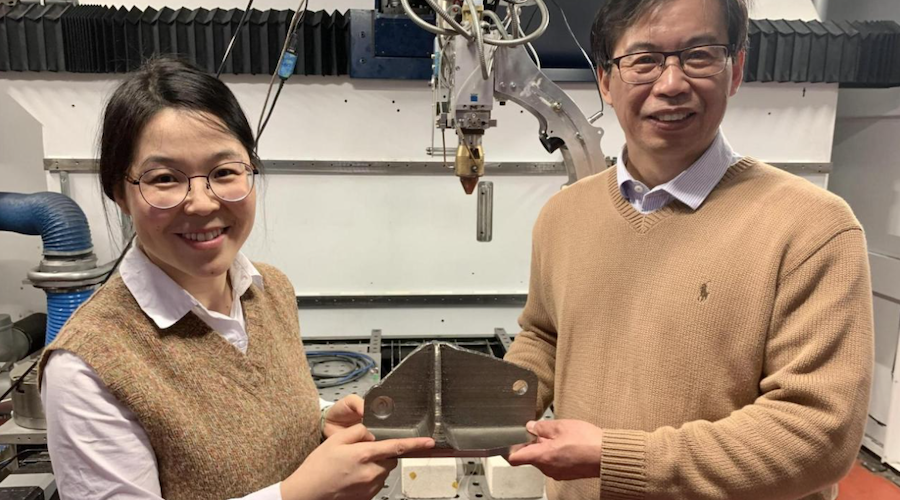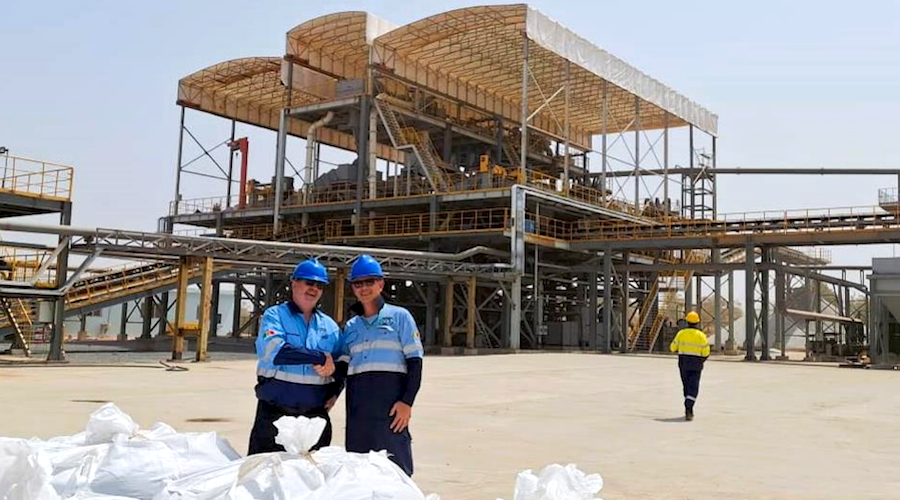Scientists use 3D printing to create new titanium alloy

A team of researchers from Australia and Hong Kong has created a new class of strong titanium alloys by integrating alloy and 3D printing process designs.
In a paper published in the journal Nature, the scientists explain that their development could help extend the applications of titanium alloys, improve sustainability and drive innovative materials technologies. They see potential in aerospace, biomedical, chemical engineering, space and energy technologies.
The new materials consist of a mixture of two forms of titanium crystals, called alpha-titanium phase and beta-titanium phase, each corresponding to a specific arrangement of atoms.
While titanium alloys have traditionally been produced by adding aluminum and titanium, the researchers investigated the use of oxygen and iron – abundant and inexpensive elements that can act as powerful stabilizers and strengtheners of alpha and beta-titanium phases.
“The critical enabler is the unique distribution of oxygen and iron atoms within and between the alpha-titanium and beta-titanium phases,” co-lead researcher Simon Ringer said in a media statement. “We’ve engineered a nanoscale gradient of oxygen in the alpha-titanium phase, featuring high-oxygen segments that are strong, and low-oxygen segments that are ductile (retaining its strength after being moulded into a narrow thread) allowing us to exert control over the local atomic bonding and so mitigate the potential for embrittlement.”
Ringer and his colleagues embedded circular economy thinking in their design, creating great promise for producing their new titanium alloys from industrial waste and low-grade materials.
According to the researchers, so far, two challenges have hindered the development of strong and ductile alpha-beta titanium-oxygen-iron alloys through conventional manufacturing processes.
“One challenge is that oxygen – described colloquially as ‘the kryptonite to titanium’ – can make titanium brittle, and the other is that adding iron could lead to serious defects in the form of large patches of beta-titanium,” head researcher Ma Qian said.
The team used Laser Directed Energy Deposition (L-DED), a 3D printing process suitable for making large, complex parts, to print their alloys from metal powder, developing a unique microstructure to rival commercial alloys.
For Zibin Chen, co-lead author of the paper, the research has broader implications when it comes to oxygen embrittlement in titanium but also in zirconium, niobium and molybdenum and their alloys.
“Our work may provide a template to mitigate these oxygen embrittlement issues through 3D printing and microstructure design,” Chen said.
{{ commodity.name }}
{{ post.title }}
{{ post.date }}



Comments
Huosheng LONG
3D printing can produce new materials for the world